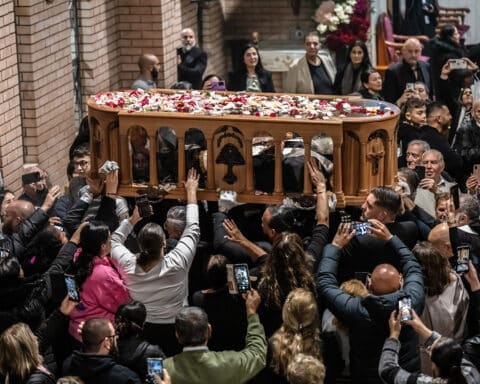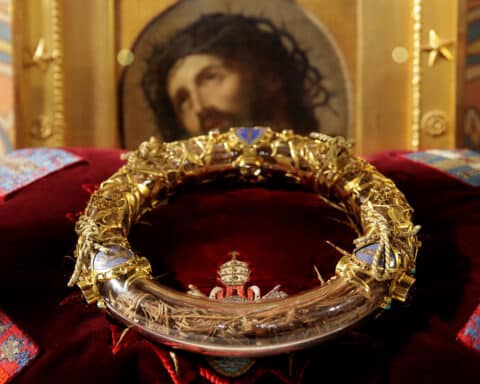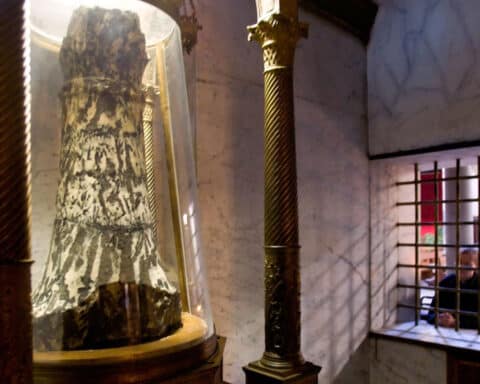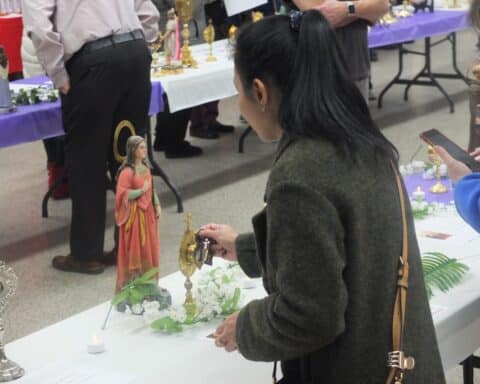The Third Finding of the Head of St. John the Baptist: No, this isn’t a title for the next Nancy Drew mystery. It is the name of the feast that the Eastern Rite Catholic and the Eastern Orthodox Churches celebrate on May 25. This hilariously named feast day carries a fascinating history and is a story that has not yet reached its conclusion.
The First Finding
Thanks to St. Mark’s Gospel (6:29), we know that the disciples came and took St. John the Baptist’s body, but what happened to his head?
Tradition says that the head was buried by Johanna, wife of Chusa, on the Mount of Olives. Years later, a monk named Innocent uncovered it and venerated the holy relic with great devotion. Before his death, Innocent hid it again out of fear that it would be desecrated by unbelievers.
The Second Finding
The following tale recounts what seems to be multiple mini-findings of St. John’s head. However, the Eastern Rite Catholic and Orthodox Churches seem to merge these accounts as simply “The Second Finding.”
In the fourth century, the saintly head was discovered by two monks, thanks to an apparition from St. John the Baptist himself. The head was then passed to a potter, then the potter’s sister, then to other family members until it finally ended up with an Arian heretic. And then, it was lost again (surprise, surprise) somewhere in Emesa (now Homs, Syria).
In the fifth century, the Archimandrite Markell of the Emesa monastery received a spiritual revelation as to the head’s location and recovered it. A church dedicated to St. John housed the head until it was moved to Constantinople. As iconoclasm emerged in the ninth century, Christians took the relic and hid it in Kamani to protect it.
The Third Finding
Years later, the Seventh Ecumenical Council restored sacred imagery and veneration in the Orthodox Church. Providentially, a patriarch named Ignatius received a revelation as to where to find the holy head. Ignatius recovered the relic and returned it to Constantinople for veneration.
Where is the head now?
In the years following, crusaders and churches gained possession of the head and moved it several times. It’s possible that, during this time, the head was even divided into several pieces. Today, its true location remains unknown, but four primary locations claim to be its resting place.
The first is the cathedral in Amiens, France. The cathedral claims that it was given to the bishop of Amiens in 1206, prompting the construction of the cathedral itself. The cathedral in Amiens possesses the front part of a skull, from the forehead to the upper jaw.
The second candidate is the Basilica of San Silvestro in Capite, located in Rome. At San Silvestro, visitors will find in a golden reliquary the top portion of the skull.
The Residenz Museum in Germany is the third to claim their skull fragment is St. John the Baptist’s, having inherited it from Duke Wilhelm V’s collection of relics.
The final location is the Umayyad Mosque or the Great Mosque of Damascus. This mosque was built over a basilica dedicated to St. John the Baptist and holds that it is the true possessor of the sacred relic.
St. John the Baptist in Islam
It’s obvious why St. John the Baptist, the proclaimer of the Messiah, would be venerated among Christians. But what is even more interesting is the reverence that St. John the Baptist is paid by Muslims.
Islam counts the Prophet Yayha (how the Qur’an refers to John the Baptist) as a holy prophet, along with Abraham, Mohammed and Jesus. Islamic sources tell of Yayha’s miraculous birth to aged parents and his call to repentance. However, they view his baptismal ministry simply as a prefigurement of their ritual washing before Salah, which is prayed five times a day. In stark contrast, Catholics view his baptismal mission as a precursor to the Sacrament of Baptism, which truly washes away our sins.
If St. John the Baptist’s head does rest in the Umayyad Mosque, it would be incredibly poetic. Considered the fourth holiest in Islam, this mosque is where Muslims believe that Jesus will make his return. St. John the Baptist’s presence in a mosque where it is believed Jesus is to come echoes his original mission. We as Catholics know that we will not know the day nor the hour (nor the location) of the Son of Man’s return. However, perhaps St. John is on one final, post-mortem mission, crying out “Behold the Lamb of God!” to a people who do not yet acknowledge Jesus as the Son of God (cf. Jn 1:29).
May St. John the Baptist’s presence (literal or spiritual) in the Umayyad Mosque serve as a call to conversion to the Islamic people to recognize Jesus as not merely a prophet, but the true Lamb of God.





